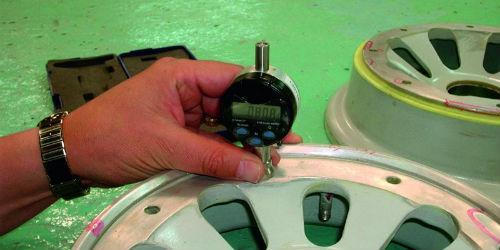This article refers to the remaining service life of a structure or component after performing a corrosion removal operation.
article refers to the remaining service life of a structure or component after performing a corrosion removal operation.
by Juan Manuel Álvarez*
This is the last article of the "Corrosion Assessment" cycle, this topic aims to highlight the importance of measuring the thickness of the remaining material after performing tasks related to the removal of corrosion products.
Commonly the operation of removal of corrosion products ends with the cleaning or decontamination of the treated area and the subsequent passivation as long as it is necessary or specified in the process of preparation of the surface, passive film that starts the protection system being complemented by the paint coating scheme, For example.
The above procedure is performed in compliance with scheduled and unscheduled maintenance programs, but according to the operation of removal of corrosion products such as wet or dry methods, or the removal of corrosion products by acid solutions (wet method) and removal of abrasion corrosion products (dry method) is removed or material consumed.
The consumption of material by reaction with the environment (corrosion product) is assessed through the depth or by the affected area, assessment that aims to determine if the corrosion affectation is repairable or not, to proceed to the removal of corrosion products in case that is the step to follow.
Additionally, during the removal of corrosion products, material is consumed in both the wet and dry methods.
In the procedure of removal of corrosion products by the wet method material is consumed by the reaction with the acid solutions that are used, and in the procedure of removal of corrosion products by the dry method material is consumed by abrasion.
In itself, the consumption of material is contemplated in the repair, which is determined from the calculation of the thickness of the material, taking into account the effects of corrosion and the physical effects that may occur during the useful life of the structure or component. Thus, the thickness of the total material is constituted by the thickness by repairability and the thickness necessary for the fulfillment of the mechanical work is determined by the loads and by the efforts to be fulfilled by the structure or component.
Therefore, it should be considered essential to assess the thickness of the remaining material after having removed all the corrosion products, since the remaining thickness really determines if it is within the thickness related to repairability.
Once the repairability thickness has been fulfilled or consumed, it is considered that it can no longer be repaired again, neither for reasons of removal of corrosion products nor for reasons of physical affectations that are within the thickness intended for the mechanical work of the structure or component.
This consideration is supported by the risk of failure, due to the plastic limit at which this "mechanical" thickness is considered to be determined, for example1.
As for the remaining service life of the structure or component, the considerations that determine it are the remaining thickness of the material and the fatigue of the material.
One of these considerations, such as the one that has to do with "the remaining thickness of the material", which is related to the theme regarding the "valuation of corrosion", which was a topic that was developed in a cycle of ten related points, gives rise to the next cycle of articles that will be developed from the next edition under the theme "Criteria and considerations related to aging".
As always I wish you a good aging and many successes in your work
Note 1: The different considerations that are taken into account for the determination of this "mechanical" thickness are not part of the objective to be discussed in this article.
* Juan Manuel Álvarez is a Consulting Member of the technical committees of NACE International, Member of A.S.T.M, of ACICOR (Colombian Association of Corrosion Engineers), of ASCOR (Colombian Association of Corrosion and Protection), of ACOSEND (Colombian Association of Welding and Non-Destructive Testing), of ICONTEC (Colombian Institute of Technical Standards), of the technical committees of END, Welding, Coatings, Fuels and others. He is also a university professor, lecturer and specialist in metal structures and composite materials. Advisory Services, Audits, Training and Contracts for the Control and Prevention of Corrosion. You can write to the e-mail: [email protected]

























Leave your comment